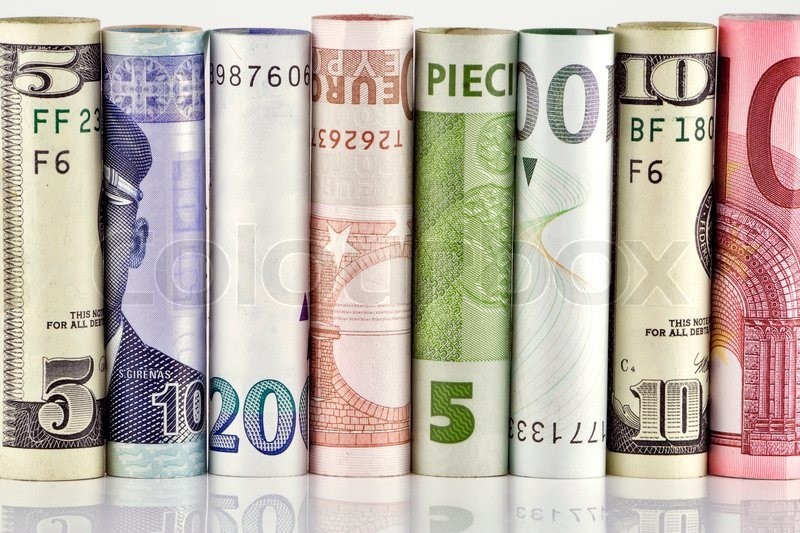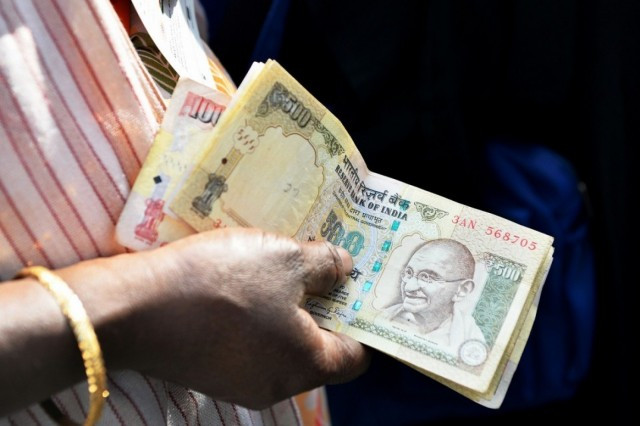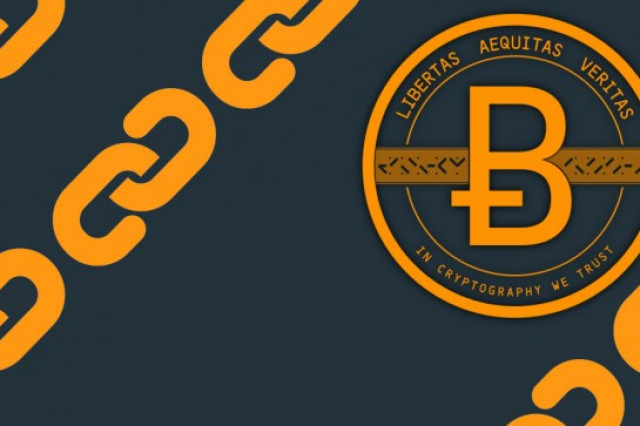A collective work directed by Bruno Théret studies monetary crises as indicator of the social nature of the currency, contrary to the judgment of John Galbraith: "The study of money is, by excellence, the domain of the economy in which complexity is used to disguise the truth rather than revealing it".

For researchers, monetary crises are particularly fruitful moments, in the course of which "monetary mechanisms disintegrate and the routine operation of money is called into question. They open the "black box" of money. The originality of this approach is to look for social nature at the very heart of the functioning of the capitalist economy. In dealing with monetary crises, the authors also do so in a field of the most consecrated of economic theory, a space of debate that has for decades been heated among the proponents of the "veil theory" -the economists who hold that money is a veil that masks the real economy- and Keynes' theories that take into account psychological elements in their reflections on money.
Moving from Roman and Athenian antiquity to the more recent Russian and Argentine crises, passing through China, the Ottoman Empire, Japan, Cuba, and so on, the work tries not only to "unveil money" but, as André Orléans says "to convince the reader of the coherence of theoretical framework proposed in their capacity to dialogue with history" in the introduction of his chapter on hyperinflation.
The theoretical framework common to the authors of the work is that of the three forms of trust in the currency proposed by Aglietta and Orléans: hierarchical trust (exhibited by money-issuing authorities), methodical trust (pragmatic confidence in the fact that the currency will be accepted in exchanges) and ethical or symbolic trust (that refers to values and institutional coherence in a society as a whole). Economic crises allow us to see the operation of these theoretical notions.
The presentation of cases is done according to the different forms of money. The first volume, "Monetary crisis of yesterday and today," revolves around the currency crises of metallic coins and convertible currencies. The second volume, centred on the Russian and German crises, reflects on the monetary crises of the self-referential currencies, that is to say, of the currencies whose value is insured by itself and not by the convertibility to a precious metal or in a foreign currency.
Monetary crises are particularly fruitful moments, in the course of which "monetary mechanisms disintegrate and the routine operation of money is called into question
Coins
There was a monetary economy before the stamped coins. Metals or certain goods were used to measure value and exchange goods. However, the fiduciary question of the coins -the fact that their apparent value was relied on and used to pay and collect, irrespective of the intrinsic value of their metallic support- was born with stamped coins (which declare the identity of their emitter) and coined in such a way that the value of the piece is not that of its metallic content, but rather a arbitrarily fixed value and guaranteed by the State. The work studies these coins in ancient Greece and Rome, in Song China (from the tenth to the twelfth century), in in the Ottoman empire of the seventeenth century and in the Tokugawa Japan (17th-19th centuries).
In ancient times, central powers were well aware of the way money operated and imagined monetary mechanisms to fill empty chests in periods of inflation and monetary shortages. Jean-Michelk Carrié describes the great monetary crises of the Roman Empire of the third and fourth centuries, characterized by the constant decrease of the metallic content of the pieces, which led to the practice of "saucage" consisting of coating parts that had been almost completely emptied with a thin film of silver.
Chapter seven reflects on the building of confidence in metal coins, wondering as in ancient Rome, Song China and Tokugawa Japan, if users could little by little accept considering value, not according to that of the metal that they were made of, but rather in function of the confidence that they deposited in the issuing authority, which was the State or regional aristocracy. This represents the link between the establishment of a fiduciary currency and the construction of the State.
Convertible currencies

The second part of the book deals with the most recent monetary crises. The first two chapters detail the stabilization processes of the British and American currencies. The next ones address situations in which several currencies cohabit in the same territory, when "currency boards" are adopted; that is to say, systems by which the national currency is tied to a foreign one (usually the dollar) at a fixed exchange rate, the advantage of which is to stabilise the value of the local currency, but has the inconvenience of taking away the State's monetary sovereignty.
Jérôme Blanc describes the reintroduction of Litas in Lithuania in the early 1990s. This new currency, an emblem of recovered sovereignty, was nevertheless quickly tied to the dollar, and the Lithuanian authorities lost a large part of their prerogatives. However, this apparent loss of sovereignty is justified by the history of the Lita, which had a fixed parity with the dollar during the interwar period.
Jaime Marqueis Pereira and Bruno Théret are equally inclined to the symbolic meanings of the currency in their original analysis of the dollarization of Cuba, showing that although they cohabit on the same island, the American dollar and the Cuban peso have different dimensions. The authors recount how the regime has managed to morally neutralize the dollar by integrating it into its redistributive system.
The self-referential currencies, Russia and Germany in the twentieth century
In 20th-century Russia, marked by chronic monetary instability, the Ruble has been consistently used as an instrument of power grabbed by a state that has "patrimonized" it, according to Raimne Motamed-Nejad. The four chapters devoted to Russia present the constant grabbing of money by the dominant social classes. Laure Després reports that, during the Russian Civil War between 1918 and 1924, not only did hyperinflation make it difficult to use money, but above all, each country forbade the other to possess its opponent's currency under penalty of death, making its use quite dangerous.
During the Russian Civil War, between 1918 and 1924, not only did hyperinflation make it difficult to use money, but above all, each field forbade the other to possess the opponent's currency
This panorama was aggravated in post-Soviet Russia, where the elites, to get round the limitations of payments, transferred their debts to creditors in particular, unpaid wages) and a complacent state. This phenomenon leads Jacques Sapir to oppose the hypothesis of Orlean and Aglietta, in the "violence of money". For him, money is not a mediator in an individual mimetic rivalry, but of social conflicts structured around collective interests, consciously expressed or not. Russian monetary history is also unique because it recurrently presents an alternative monetary and financial system to the Ruble. Forms of "naturalization of exchanges"; that is to say, of the payments in kind, that Laura Després describes during the communism of war, is a reality that has survived. in post-Soviet Russia, bartering between companies replaced money patrimonialized by the state environment. Pepita Ould-Ahmed associates the development of barter with a crisis of the official monetary institutions, which failed to establish hierarchical trust. Barter is a temporary resource that provides confidence to economic agents.
The history of Germany in the twentieth century is also marked by monetary crises. André Orléans, in his brilliant article on the hyper-inflation of the 1920s, tries to prove two hypotheses founded in "The Sovereign Currencies". First, money is necessary in mercantile bonds and not only is it a veil, but also its collapse leads the country to lose its economic references. The proliferation of "safe haven currencies" when the collapsed framework confirms the theoretical analysis, according to which mercantile exchanges cannot be made without money. Secondly, money has a specifically political dimension. The monetary crisis was a group global crisis related to others. "If there is no money, people will fight to the death among themselves," said Konrad Adenauer, then mayor of Cologne. The end of the crisis consisted in the reestablishment of the group's unity around a new definition of the monetary environment.
The trauma of the hyperinflation of the 1920s was reproduced when, after the Second World War, the Allied authorities were trying to find a solution to the Reichmark's devaluation. The Deutschemark, introduced in 1948, was at the origin of the "German miracle", creator of a currency that appeared as a collective heritage. The chapter of Éric Dehay raises the question of nominalism; that is, the value written on bills as opposed to the real value of the currency, as the trigger of inflation. This question is exciting because it articulates relatively technical economic mechanisms with more sociological issues, showing the crisis of a society that loses confidence in the nominal value of its currency and fins that its real value is unknown.
A difficult articulation between theory and empiricism
In ancient times, central powers were well aware of the way money operated and imagined monetary mechanisms to fill empty chests in periods of inflation and monetary shortages
In any case, does the work achieve the goals it sets? "We should recall that what we are interested in is less an analysis of monetary crises (insofar as they are a synthesis), rather what they can teach us about the very nature of money, beyond the extreme diversity of societies which these crises occur in" says Bruno Théret in the introduction. It is therefore surprising not to find a general and theoretical conclusion in it. A theoretical synthesis appears in the first chapter, in which Bruno Théret presents a map of the different forms of crisis which, in this preliminary apposition, is relatively abstract.
(...) Beyond this reservation on the articulation of the territories of theory and the reproach on researchers of other social sciences, this erudite work makes the point in the company of refoundation of the monetary theory, and opens numerous perspectives of investigation in different areas. The team has been feminized and enriched by the young economists gathered around Bruno Théret, who have constructed a dense and demanding work, which is not as austere as it may seem at first sight.
(*) Extracts
(**) http://www.laviedesidees.fr/










